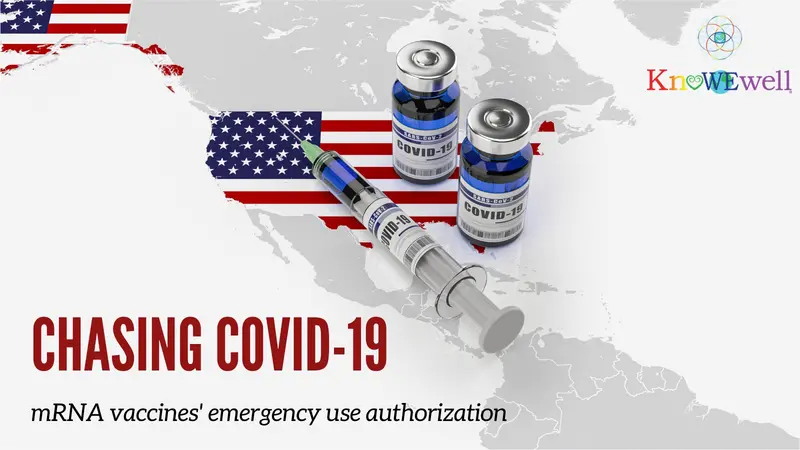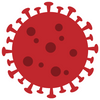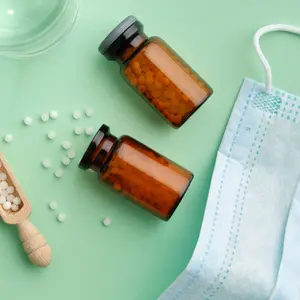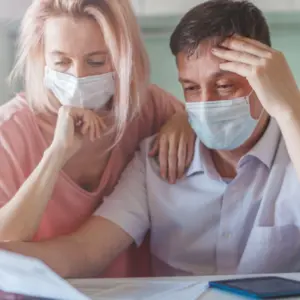

COVID-19

COVID-19
Chasing COVID-19
An in-depth look at the two mRNA vaccines that the world is hoping will stem the COVID-19 pandemic
2021 has dawned with a sigh of relief from many, as 2020 did not appear to be anyone’s year. However, we are not exactly on stable ground. Today 93.8 million confirmed cases of Sars-CoV-2 have been reported since the virus took the world hostage in early 2020. Thus the news of not just one but now two vaccines is seen by many as the first breath of fresh air in a while. The US Food and Drug Administration (FDA) granted emergency use authorization (not official approval) to Pfizer-BioNTech and Moderna for their vaccines. These authorizations allowed thousands of frontline workers and the first wave of high-risk populations to be administered the first of a two-shot process.
This monumental scientific feat is equally inspiring and surprising to many people, leading to questions about the integrity, efficacy, and safety of these vaccines. Traditional vaccines have taken at least 10 years to make it to final rounds of approval. Pfizer and Moderna developed their vaccines in around 10 months. However, it is critical to note that prior to the Sars-CoV-2 contagion that brought the world to a standstill, the technology embraced by Pfizer-BioNTech’s and Moderna’s head scientists and engineers was not so new. In fact, at the height of the Ebola epidemic that plagued Africa starting in 2014 and took millions of lives, vaccine developers were championing this technology to take center stage to aid in the fight. Its potential was not convincing enough to veer off the path of traditional vaccine exploration and investment. Fast forward half a decade: A global pandemic’s outcry changed potential to necessity.1
There is no predetermined timeline for vaccine development. Typically, the better the scientific understanding of a pathogen and the disease it causes, the more efficient vaccine development.
What We Now Know
Over 20 years ago at the University of Pennsylvania, Drew Weissman and Katalin Karikó were among the first to start engineering mRNA as a new defense against viral diseases. Together, the immunologist and molecular biologist worked out how the human body could use its own genetic material production to combat any pathogen.3 As humans, when we mount a defense against an invading species, our body creates antibodies for the antigens, or identifiers, it has just seen in order to be better prepared to fight next time. With mRNA, one would just need to sequence the virus and pick out the code for one of its several identifiers, which in the case of Sars-CoV-2 is the spike protein found on the outside of the virus. By delivering this genetic information into the body through a vaccine, the human immune system will be able to prepare itself for if or when it comes in contact with the actual virus. “There is no predetermined timeline for vaccine development. Typically, the better the scientific understanding of a pathogen and the disease it causes, the more efficient vaccine development.” This statement made by the FDA aims to simplify exactly what has been creating such progress these past several months5. Due to the fact that up to 44% of all emerging infectious disease are RNA viruses, this potential is truly promising for the future of global health and mortality.4
News of not just one but now two vaccines is seen by many as the first breath of fresh air in a while.
There is still the question of how, in such a short amount of time, these vaccines have been made available to the public. In the past, a vaccine’s typical production timeline and process was long and laborious. It has six main stages as noted by the Centers for Disease Control and Prevention (CDC), including the exploratory stage, pre-clinical stage, clinical development, regulatory review and approval, manufacturing, and quality control.2 The stages individually take a few to several years for a vaccine to make it past each benchmark and move forward in its development. For example, the exploratory stage tends to last 2-4 years as scientists and researchers identify natural and/or synthetic antigens. As we have noted with mRNA, this process is greatly simplified through the scientific advancements over the years in genetic coding. Next, in the pre-clinical stage, 1-2 years are typically spent as vaccines try to produce a desired response. mRNA has been shown to elicit a much stronger immune response than traditional vaccines have ever had, once again cutting down on time to production.12
The Need to Look Deeper
Probably the most important stage of getting these vaccines to market is the clinical development stage. Three phases are included in the development, but the public and scientific world’s main focus has been on phase III, where efficacy and safety are put to the test in a larger, more diverse patient population. Half of the participants of each trial would be injected with a placebo, and the other half with the vaccine. Studies showed early on that there “is increasing evidence that some racial and ethnic minority groups are being disproportionately affected by COVID-19.”11 Pfizer-BioNTech and Moderna have acknowledged this unfortunate reality and so have adapted their trials to account for this.6,8
Pfizer-BioNTech’s approval for emergency use by FDA under an Emergency Use Authorization (EUA) was only made possible through the results found in its phase III trial process, which enrolled 45,302 through approximately 150 trial sites in six countries. There is growing evidence that 42% of the trials’ overall population came from diverse backgrounds. Specifically, US totals included 10% Black, 13% Hispanic/Latino, and 5% Asian. Around 40% of the participants were ages 56 or above, with the other large majority aged 18 to 55. Efficacy was shown at 95%, which was “observed across subgroups defined by age, sex, race, ethnicity, baseline body-mass index, and the presence of coexisting conditions.”13
mRNA technology has been shown to elicit a stronger immune response than more traditional vaccines.
The Moderna vaccine’s phase III trial was conducted under similar parameters. All of the 30,420 participants from 99 centers across the US were persons 18 years or older. In acknowledgement of the disproportion of those affected by the virus, “site-selection and enrollment processes were adjusted to increase the number of persons from racial and ethnic minorities.”14 Subgroups based on degree of risk for contracting the virus were made to better test and analyze the vaccine against the placebo. The Moderna vaccine “showed 94.1% efficacy at preventing Covid-19 illness, including severe disease,” and this efficacy was also consistent across the established subgroups.14
However, the FDA has made it clear that it is “critical to continue to gather data about the vaccine even after it is made available under EUA.”7 The long-term effects are still very much in question as these past few months of testing have only created preliminary results. Due to the fact that the mRNA technology has been shown to elicit a stronger immune response than more traditional vaccines, the implications for those who suffer with chronic inflammatory or autoimmune-related conditions is definitely of concern to many experts. Leonard Calabrese, DO, head of the Cleveland Clinic’s Section of Clinical Immunology, was very frank on the matter, stating, “The issue of greatest concern in the immediate period for patients with immune-mediated inflammatory disease is that this group was not studied in trials.”9
It is not atypical for pre-market approval trials to exclude immunocompromised patients, as they will be studied once the effects on the general population is better understood. In addition, the two mRNA vaccines are not live, which also helps to reduce concerns about safety in immunocompromised patients. In terms of efficacy, those on immunosuppressants may experience a less robust immune response than others because of the prescribed drug’s mechanism of action. Despite this, Dr. Anthony Fauci, director of the National Institute of Allergy and Infectious Diseases, was clear in his stance that any amount of immunity can play a role in stopping the spread and reaching herd immunity.10 Regardless, to assure safety, individuals with cancer, compromised immune systems, history of allergic reactions, or other unstable health conditions should always consult their primary care provider before receiving the vaccine.
The other implication for eliciting a stronger immune response that could be of concern to the general public is the occurrence of adverse events. Moderna’s preliminary results showed that solicited adverse event of pain at the injection site constituted 86% of participant complaints. Complaints of other solicited adverse events, ranging in severity, increased with the administration of the second doses. Any solicited systemic adverse events tended to last on average 2.6 to 3.1 days and were more common in younger participants than in those 65 years of age and older. Unsolicited adverse events had similar frequency between the placebo and vaccine group, with only 0.6% experiencing serious adverse events. Two deaths were reported in the group receiving the vaccine—a cardiopulmonary arrest and a suicide.14
The issue of greatest concern in the immediate period for patients with immune-mediated inflammatory disease is that this group was not studied in trials.
The Pfizer-BioNTech trial showed similar findings in proportionately diverse subset groups observed. Two of the vaccine recipients died during the trial, one from atherosclerosis and the second from cardiac arrest, which upon further review was revealed not to be connected to the vaccine. While the younger age group experienced slightly higher frequency of local and systemic reactions, there was no increasing effect in the respective second doses. The most common systemic events were fatigue and headaches, reported in about 60% of recipients. Serious systemic events were reported in less than 2% of those receiving the vaccine. Lastly, of all the participants in the trial, only four related serious adverse events were reported.13
As the vaccine has been rolled out into the public, there have been reported cases of allergic reactions to varying degrees. While this vaccine is not live and thus does not use the normal perpetrators of allergic reactions, such as egg products, some inactive ingredients can trigger a response in individuals with an unknown allergy. There is some evidence that “a person’s immune system may react to PEG”—one of the inactive ingredients in both of the vaccines—but “anaphylactic reactions are rare”.15
Where Does This Leave Us Now?
While obtaining the vaccines does not seem to be an issue so far, with the US government having already verbally secured over 150 million doses by June 202117, health officials and hospitals have struggled to efficiently distribute doses. The CDC reported that as of January 17, some 31 million vaccine doses had been distributed nationwide but only 12 million had been administered.16 The holiday season and snowstorm in the Northeast most likely contributed to this delay early on, but as of mid-January the situation had not improved. States have established their own criteria for who should get the vaccine first and local health departments, hospitals, and other providers are trying to manage the tangle of logistics. The result is a disjoined process that is causing frustration and confusion.16
Individuals with underlying health conditions should consult their primary care provider before receiving the vaccine.
Additional pressure comes from the concerning variant strain first seen in the U.K. and Africa that has now made its way into the US, with cases, at the time of writing, already in Colorado, Florida, California, and New York. This variant has been shown to be more contagious, “responsible for more than half of the new infections in the U.K.”18 The CDC is monitoring the situation closely.
While the vaccine may be delayed in its distribution, there are ways for you to aid in the fight against COVID-19 and to stop the spread. The vaccine may stop the recipient from contracting and suffering from the virus, but there is no data yet on its effects on whether or not it reduces the risk of the recipient’s potential to spread COVID-19 to close contacts.19 It is still important to remain diligent in wearing a mask and physically distancing to reduce your chance of exposure and thus your potential to spread the virus.
It also is important to reduce your risk of severe illness from contracting COVID-19 and its variants by addressing those chronic health conditions that put you at greatest risk. The CDC has warned that “adults of any age with certain underlying medical conditions are at increased risk for severe illness from the virus that causes COVID-19.”21 CDC provides a list of 12 underlying medical conditions leading to increased risk, including chronic conditions such as kidney disease, COPD, Type 2 diabetes, heart conditions, and obesity.21 While CDC reports show that chronic diseases are currently the most prevalent global health conditions, they also point out that chronic diseases are the most preventable of all health problems.21
Making and sustaining positive lifestyle choices are effective in addressing and reversing many chronic diseases. In addition, “appropriate lifestyle changes in regard to nutrition, exercise, sleep, smoking and alcohol intake may help shift the population distribution of infection risk and aid in preventing severe COVID-19 disease.”20
By eating healthy, locally grown food, getting more physical exercise, avoiding too much alcohol and all smoking, going for regular health screenings, getting sufficient sleep, and reducing our exposure to toxic environmental exposures, we improve our physical health. We support proper mental health by maintaining meaningful relationships, practicing gratitude, developing a positive mindset, turning to faith or spirituality for comfort, and/or seeking to find purpose in life.
While you wait for the vaccine to come to you, stay informed about vaccine efficacy and adverse reactions, consult with your medical practitioner if you have questions or concerns about your specific health conditions, focus on addressing your chronic diseases, wear a mask and physically distance from others, and stay emotionally engaged with friends and family, especially those that may have lost a loved one to this deadly pandemic.
REFERENCES
- Meyer, M., Huang, E., Yuzhakov, O., Ramanathan, P., Ciaramella, G., & Bukreyev, A. (2018). Modified mRNA-based vaccines elicit robust immune responses and protect guinea pigs from Ebola virus disease. Journal of Infectious Diseases, 217(3), 451–455. https://doi.org/10.1093/infdis/jix592
- Centers for Disease Control and Prevention. (2014, May 1). Vaccine testing and approval process. https://www.cdc.gov/vaccines/basics/test-approve.html
- Loftus, P., Hopkins, J. S., & Pancevski, B. (2020, November 17). Moderna and Pfizer are reinventing vaccines, starting with Covid. The Wall Street Journal. https://www.wsj.com/articles/moderna-and-pfizer-are-reinventing-vaccines-starting-with-covid-116056…;
- Carrasco-Hernandez, R., Jácome, R., Vidal, Y. L., & León, S. P. D. (2017). Are RNA viruses candidate agents for the next global pandemic? A review. ILAR Journal, 58(3), 343–358. https://doi.org/10.1093/ilar/ilx026
- Center for Biologics Evaluation and Research. (2020, December 14). Vaccine Development–101. US Food and Drug Administration. https://www.fda.gov/vaccines-blood-biologics/development-approval-process-cber/vaccine-development-…;
- Pfizer. (n.d.). Our progress in developing an investigational Covid-19 vaccine. https://www.pfizer.com/science/coronavirus/vaccine.
- US Food and Drug Administration. (2020, December 17). Vaccines and related biological products advisory committee meeting [Briefing document]. https://www.fda.gov/media/144434/download
- National Institutes of Health. (2020, November 16). Promising interim results from clinical trial of NIH-Moderna COVID-19 vaccine. US Department of Health and Human Services. https://www.nih.gov/news-events/news-releases/promising-interim-results-clinical-trial-nih-moderna-…;
- Hiss, K. (2020, December 21). Getting a COVID-19 vaccine: What immunocompromised and chronic illness patients need to know. CreakyJoints. https://creakyjoints.org/living-with-arthritis/coronavirus/covid-19-vaccines/covid-19-vaccine-immun…;
- Radcliffe, S. (2020, December 9). Some immunocompromised people may not get a COVID-19 vaccine. Healthline. https://www.healthline.com/health-news/why-some-immunocompromised-people-may-not-be-eligible-for-a-…;
- Centers for Disease Control and Prevention. (2020, July 24). Health equity considerations and racial and ethnic minority groups. https://www.cdc.gov/coronavirus/2019-ncov/community/health-equity/race-ethnicity.html
- Anthony Komaroff, M. D. (2020, December 19). Why are mRNA vaccines so exciting? Harvard Health. https://www.health.harvard.edu/blog/why-are-mrna-vaccines-so-exciting-2020121021599
- Polack, F. P., Thomas, S. J., Kitchin, N., Absalon, J., Gurtman, A., Lockhart, S., … Gruber, W. C. (2020). Safety and efficacy of the BNT162b2 mRNA Covid-19 vaccine. New England Journal of Medicine, 383(27), 2603–2615. https://doi.org/10.1056/nejmoa2034577
- Baden, L. R., Sahly, H. M. E., Essink, B., Kotloff, K., Frey, S., Novak, R., … Zaks, T. (2020). Efficacy and safety of the mRNA-1273 SARS-CoV-2 vaccine. New England Journal of Medicine. https://doi.org/10.1056/nejmoa2035389
- Huzar, T. (2021, January 5). COVID-19 vaccine allergic reactions: Experts offer reassurance. Medical News Today. https://www.medicalnewstoday.com/articles/covid-19-vaccine-allergic-reactions-experts-offer-reassur…;
- Findell, E, Hopkins, J. S., & Frosch, D. (2021, January 17). Covid-19 vaccines are getting stuck at the last step. The Wall Street Journal. https://www.wsj.com/articles/covid-19-vaccines-are-getting-stuck-at-the-last-step-11610892001?st=ue…
- Kennedy, M. (2020, December 23). US reaches deal with Pfizer for 100 million more vaccine doses. NPR. https://www.npr.org/sections/coronavirus-live-updates/2020/12/23/949541001/u-s-reaches-deal-with-pf…;
- Schwartz, M. S. (2021, January 2). US COVID-19 death toll tops 350,000. NPR. https://www.npr.org/sections/coronavirus-live-updates/2021/01/02/952842631/new-covid-19-variant-spr…;
- Centers for Disease Control and Prevention. Benefits of Getting a COVID-19 Vaccine. Centers for Disease Control and Prevention. https://www.cdc.gov/coronavirus/2019-ncov/vaccines/vaccine-benefits.html.
- Lange, K. W., & Nakamura, Y. (2020). Lifestyle factors in the prevention of COVID-19. Global Health Journal.
- Centers for Disease Control and Prevention. About Chronic Diseases. (2020, November 17). https://www.cdc.gov/chronicdisease/about/index.htm.


 By
By







